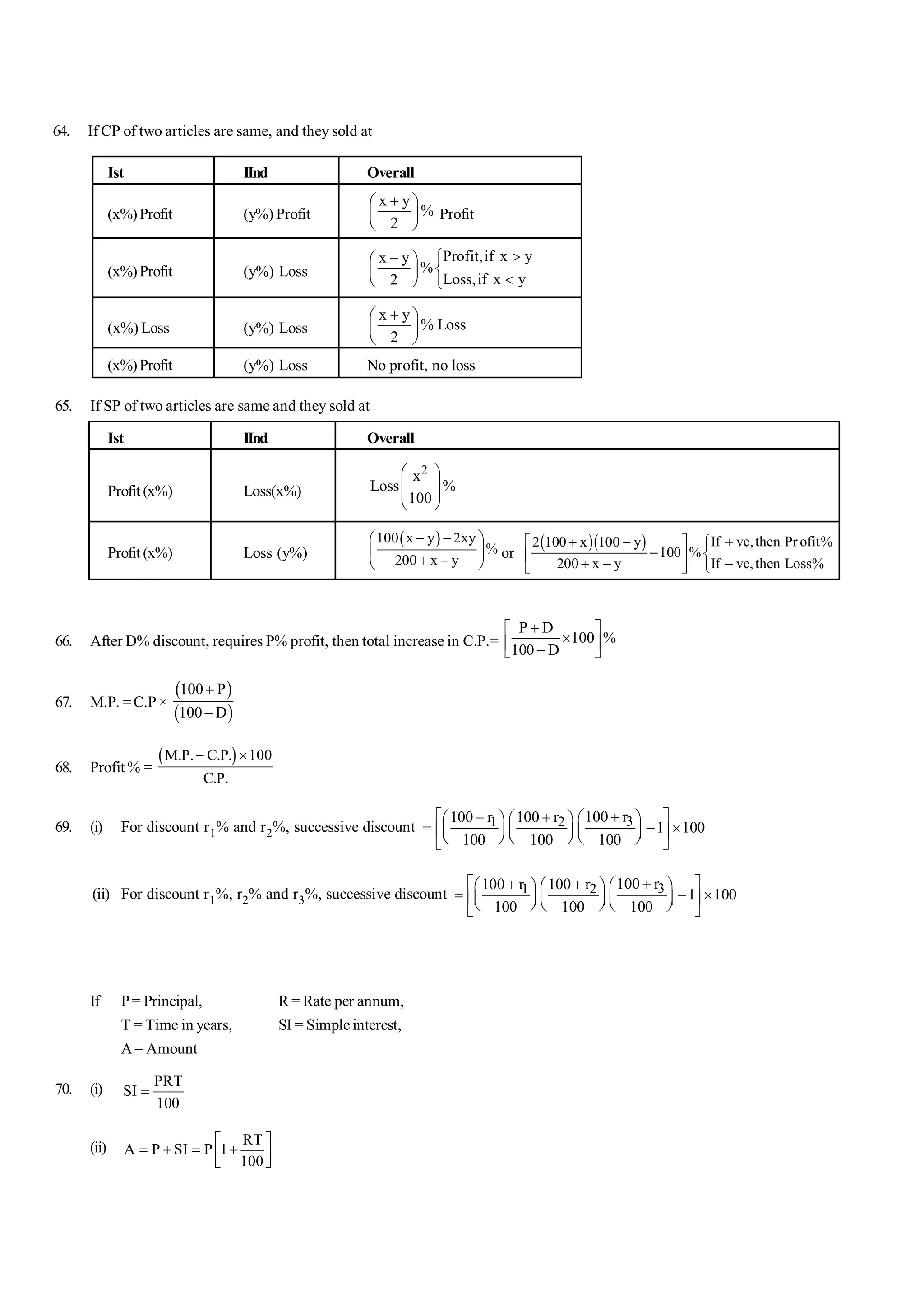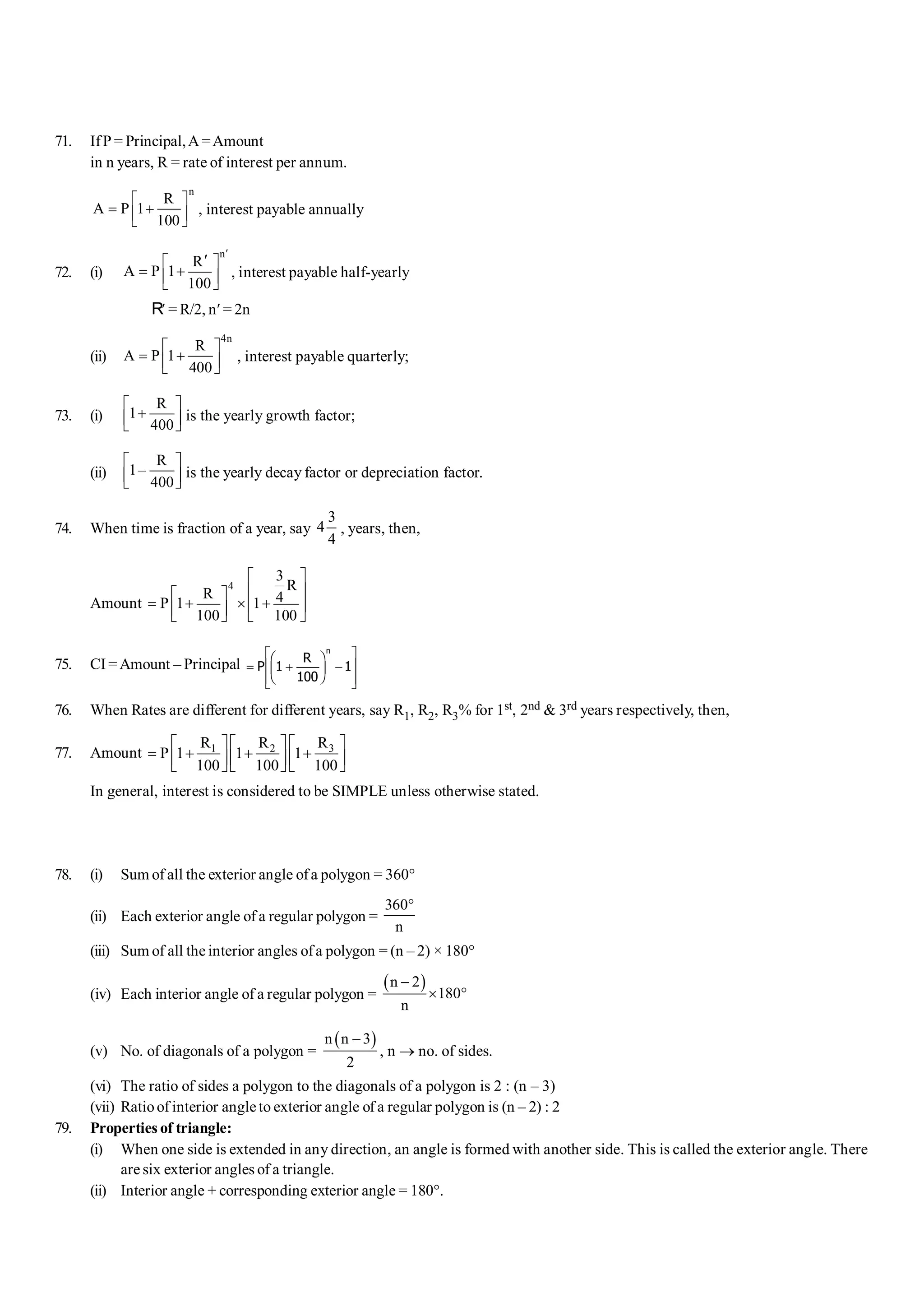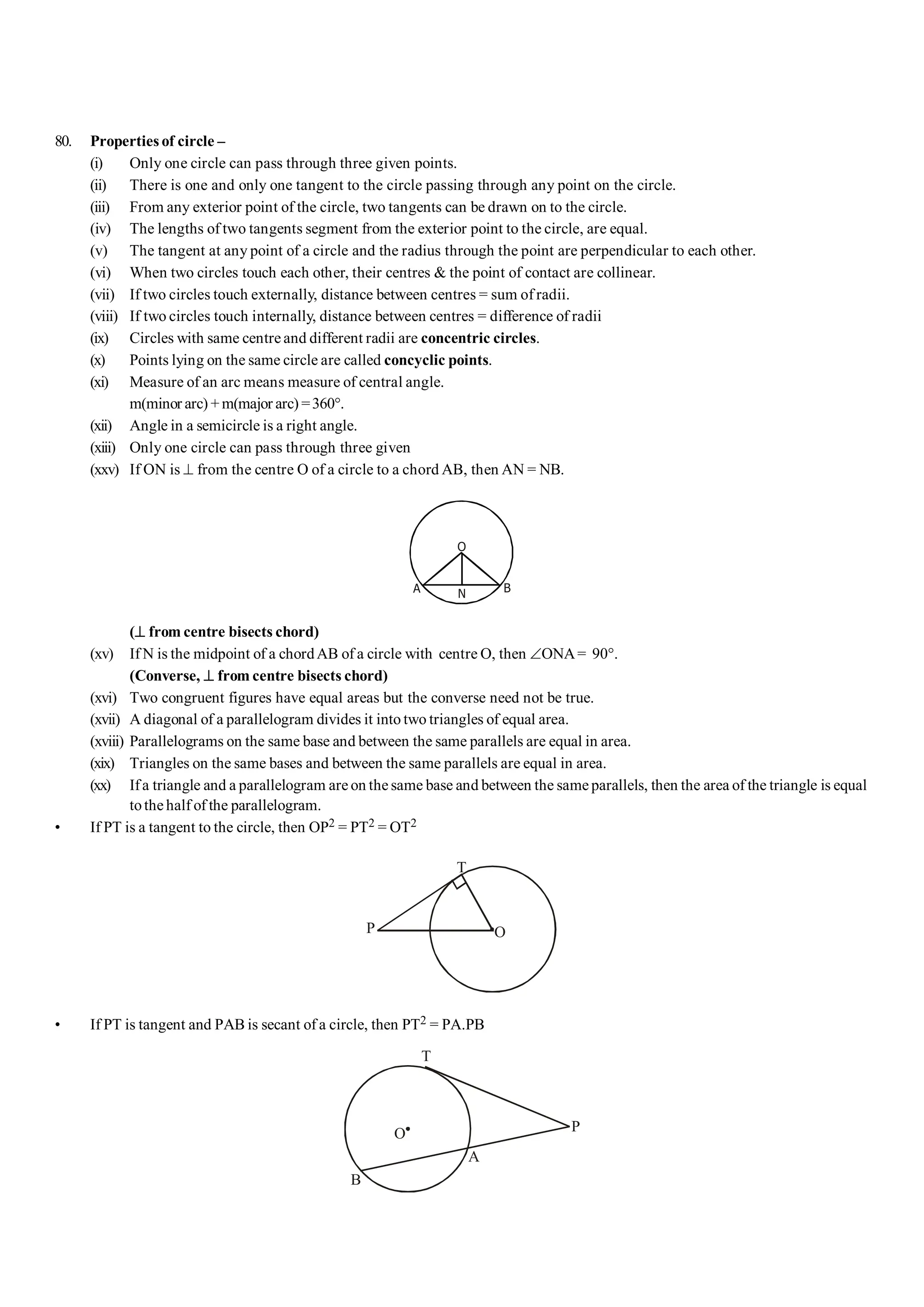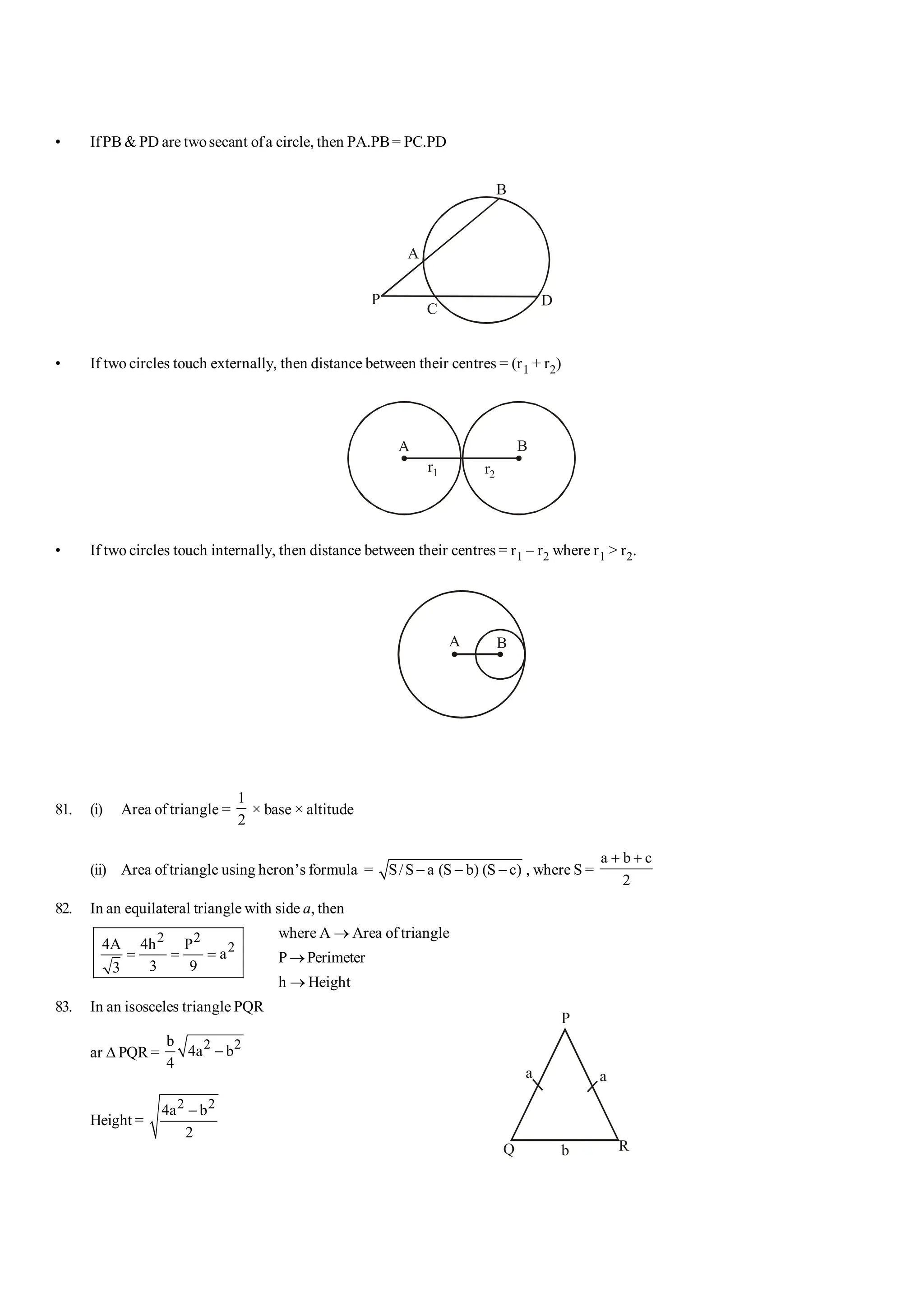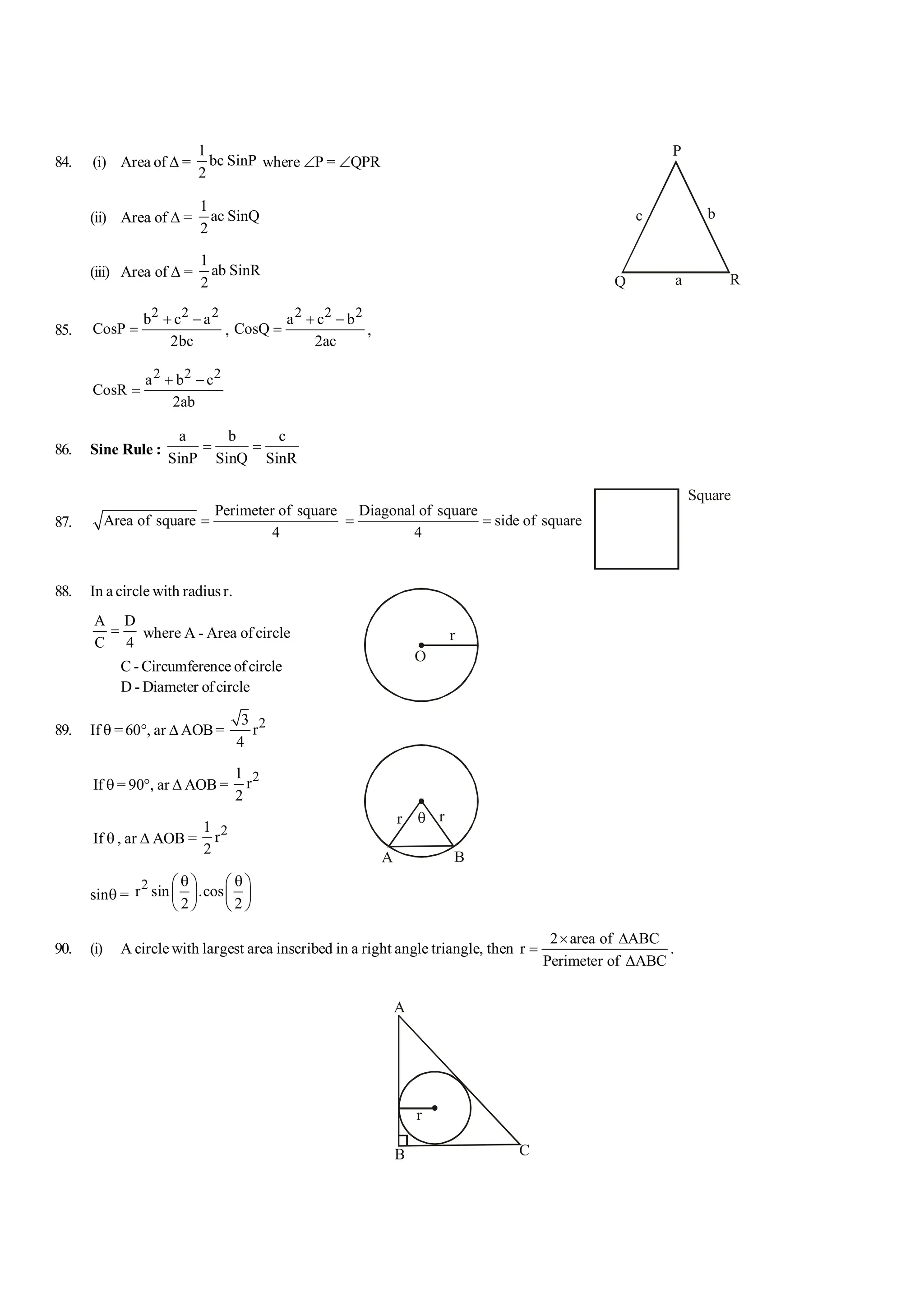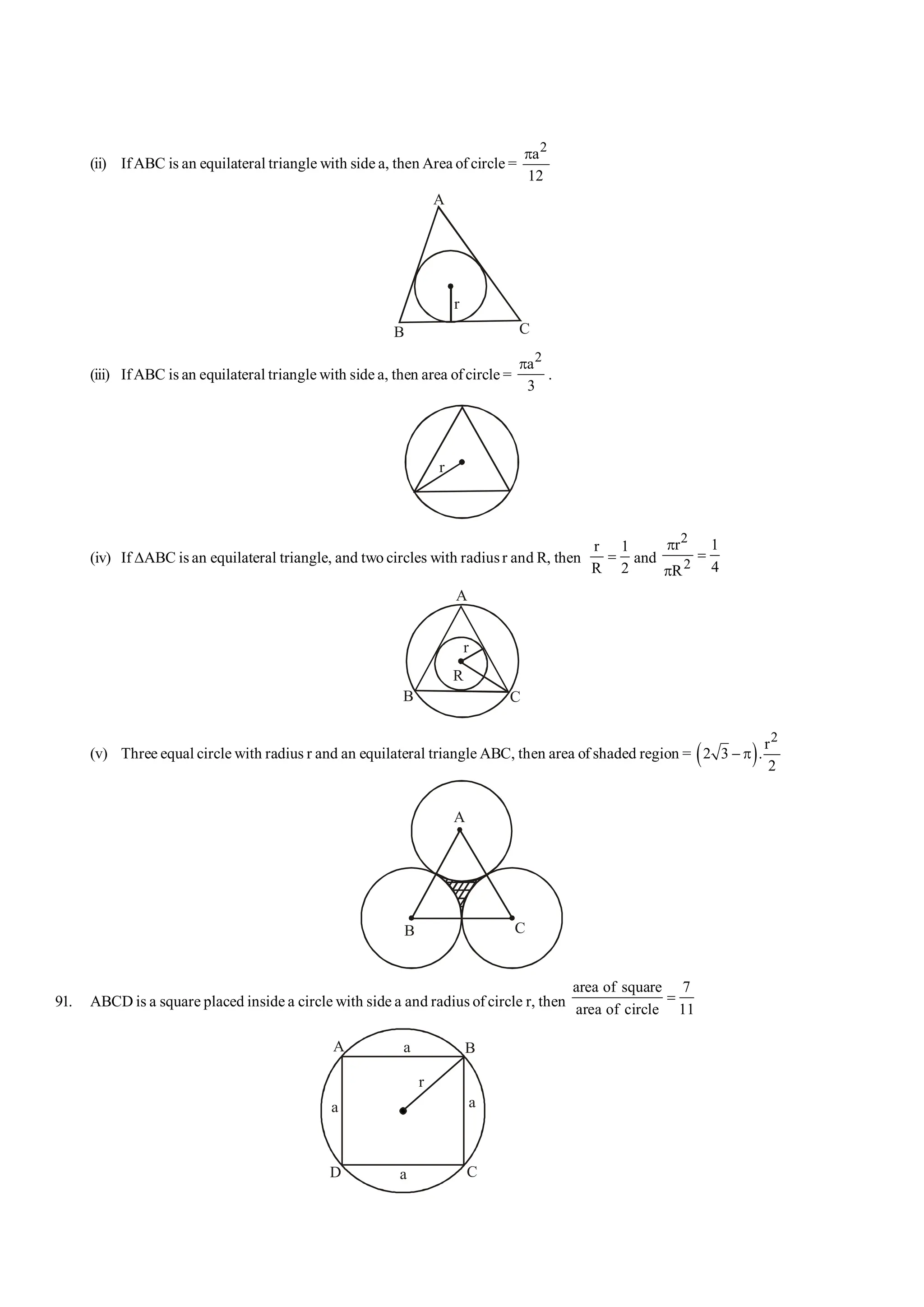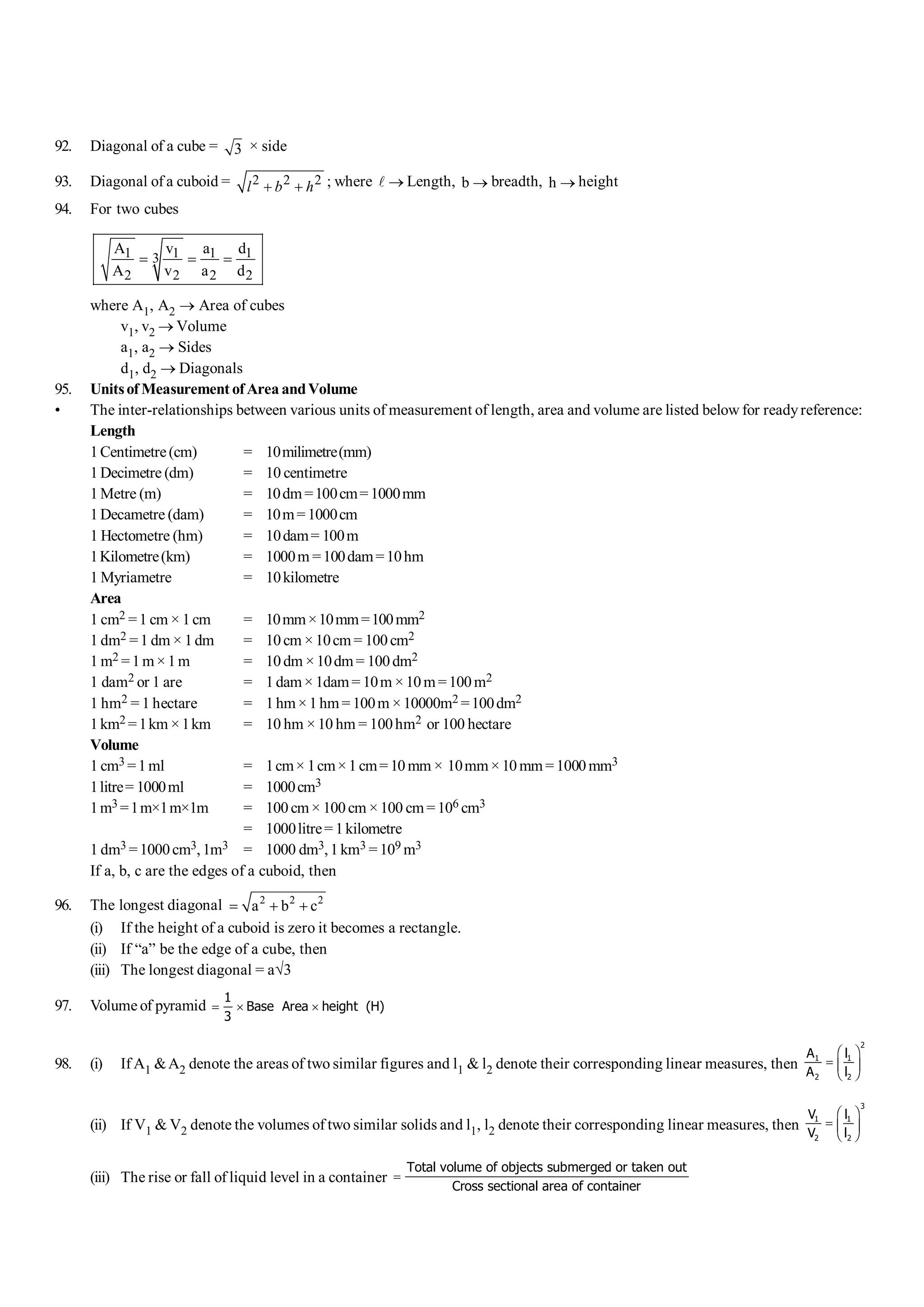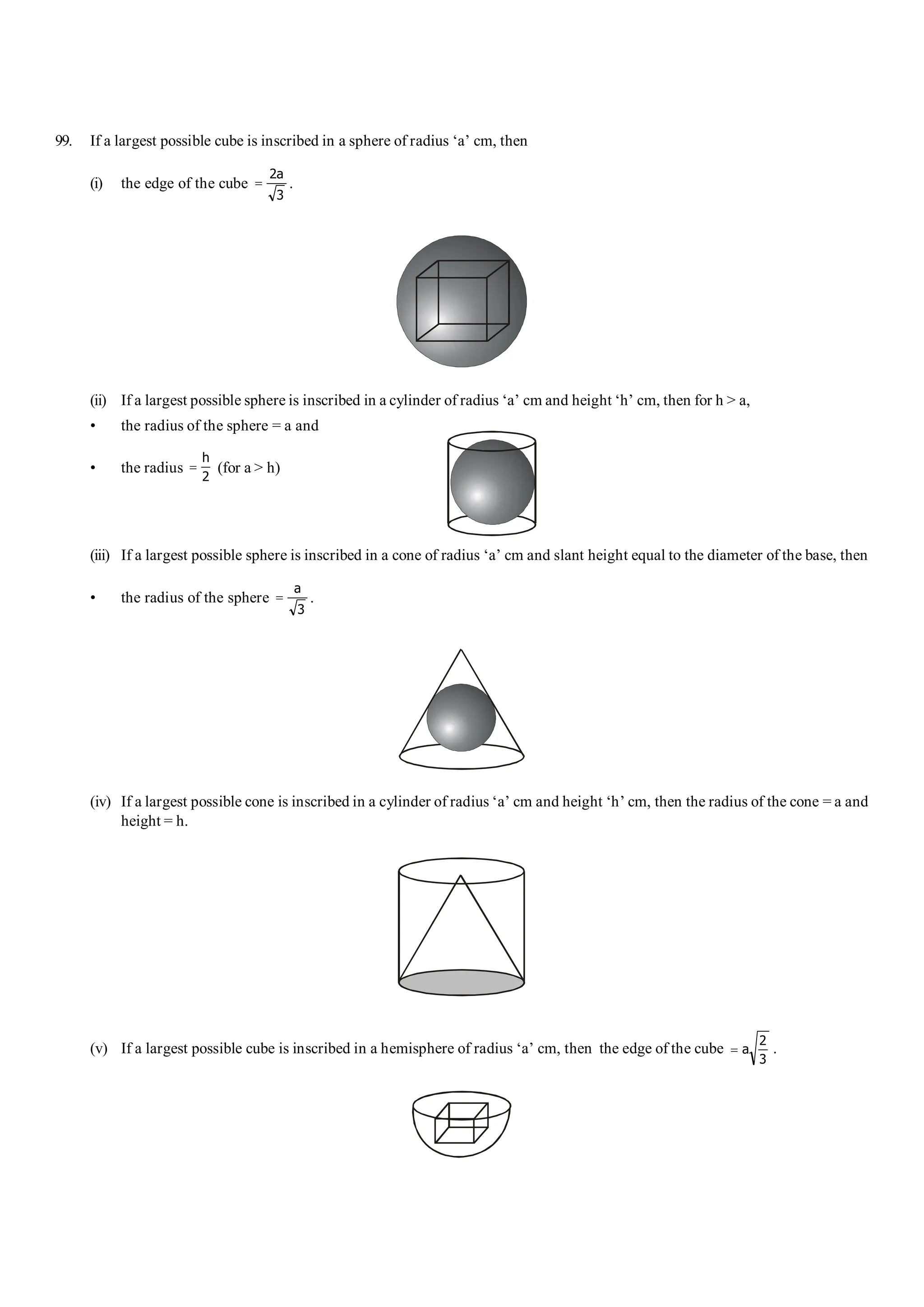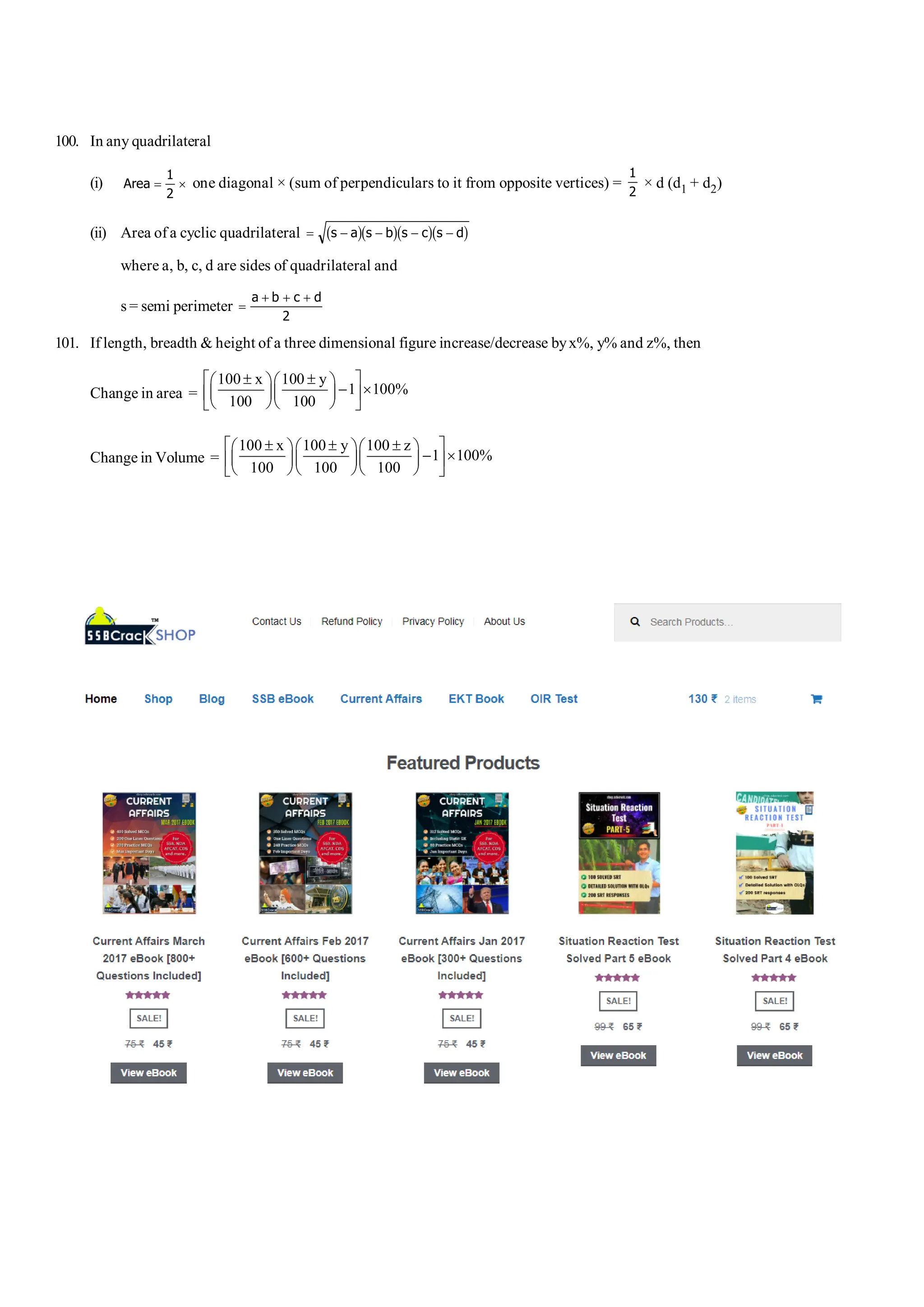This document outlines various mathematical methods and shortcuts for multiplication, summation, divisibility, and prime numbers, focusing on both 2-digit and 3-digit numbers. It includes unique techniques for calculating the squares and cubes of numbers with repeating digits, as well as methods for finding HCF and LCM. Additionally, it presents algebraic identities and properties related to square roots and factors.


![S-2 101 Shortcuts in Quantitative Aptitude
8. Some properties of square and square root:
(i) Complete square of a no. is possible ifits last digit is 0, 1, 4, 5, 6 &9. Iflast digit of a no. is 2, 3, 7, 8 then complete square root
of this no. is not possible.
(ii) If last digit of a no. is 1, then last digit of its complete square root is either 1 or 9.
(iii) If last digit of a no. is 4, then last digit of its complete square root is either 2 or 8.
(iv) If last digit of a no. is 5 or 0, then last digit of its complete square root is either 5 or 0.
(v) If last digit of a no. is 6, then last digit of its complete square root is either 4 or 6.
(vi) If last digit of a no. is 9, then last digit of its complete square root is either 3 or 7.
9. Prime Number :
(i) Find the approx square root of given no. Divide the given no. by the prime no. less than approx square root of no. If given
no. is not divisible by any of these prime no. then the no. is prime otherwise not.
For example : To check 359 is a prime number or not.
Sol. Approx sq. root = 19
Primeno. <19are2, 3,5,7, 11, 13,17
359 is not divisible byany of these prime nos. So 359 is a prime no.
For example: Is 25001 + 1 is prime or not?
5001
2 1
2 1
+
Þ
+
Reminder = 0,
25001 + 1 is not prime.
(ii) There are 15 prime no. from 1 to 50.
(iii) Thereare 25 primeno. from 1 to 100.
(iv) There are 168 prime no. from 1 to 1000.
10. If a no. is in the form of xn + an, then it is divisible by(x + a); if n is odd.
11. If xn ¸ (x – 1), then remainder is always 1.
12. If xn ¸(x+1)
(i) Ifn is even, then remainder is 1.
(ii) Ifn is odd, then remainder is x.
13. (i) Valueof
4P 1 1
P P P ..........
2
+ +
+ + + ¥ =
(ii) Value of
4P 1 1
P P P ..........
2
+ -
- - - ¥ =
(iii) Value of P. P. P........... P
¥ =
(iv) Value of ( )
n n
2 1 2
P P P P P P
- ¸
=
[Where n ® no. of times P repeated].
Note: If factors of P are n & (n + 1) type then value of ( )
P P P .... n 1
+ + + ¥ = + and P P P .... n.
- - - ¥ =
14. Number of divisors :
(i) If N is any no. and N = an × bm × cp × .... where a, b, c are prime no.
No. of divisors of N = (n + 1) (m + 1) (p + 1) ....
e.g. Find the no. of divisors of 90000.
N = 90000 = 22 × 32 × 52 × 102 = 22 × 32 × 52 × (2 × 5)2 = 24 × 32 × 54
So, the no. of divisors = (4 + 1) (2 + 1) (4 + 1) = 75
(ii) N = an × bm × cp, where a, b, c are prime
Then set ofco-prime factors of N = [(n + 1) (m + 1) (p + 1) – 1 + nm + mp + pn + 3mnp]
(iii) If N = an × bm × cp..., where a, b & c are prime no. Then sum of the divisors =
( )( )( )
( )( )( )
n 1 m 1 p 1
a 1 b 1 c 1
a 1 b 1 c 1
+ + +
- - -
- - -](https://image.slidesharecdn.com/101-math-short-240421044057-10d1a62f/75/101-maths-short-cut-tips-and-tricks-for-apptitude-3-2048.jpg)
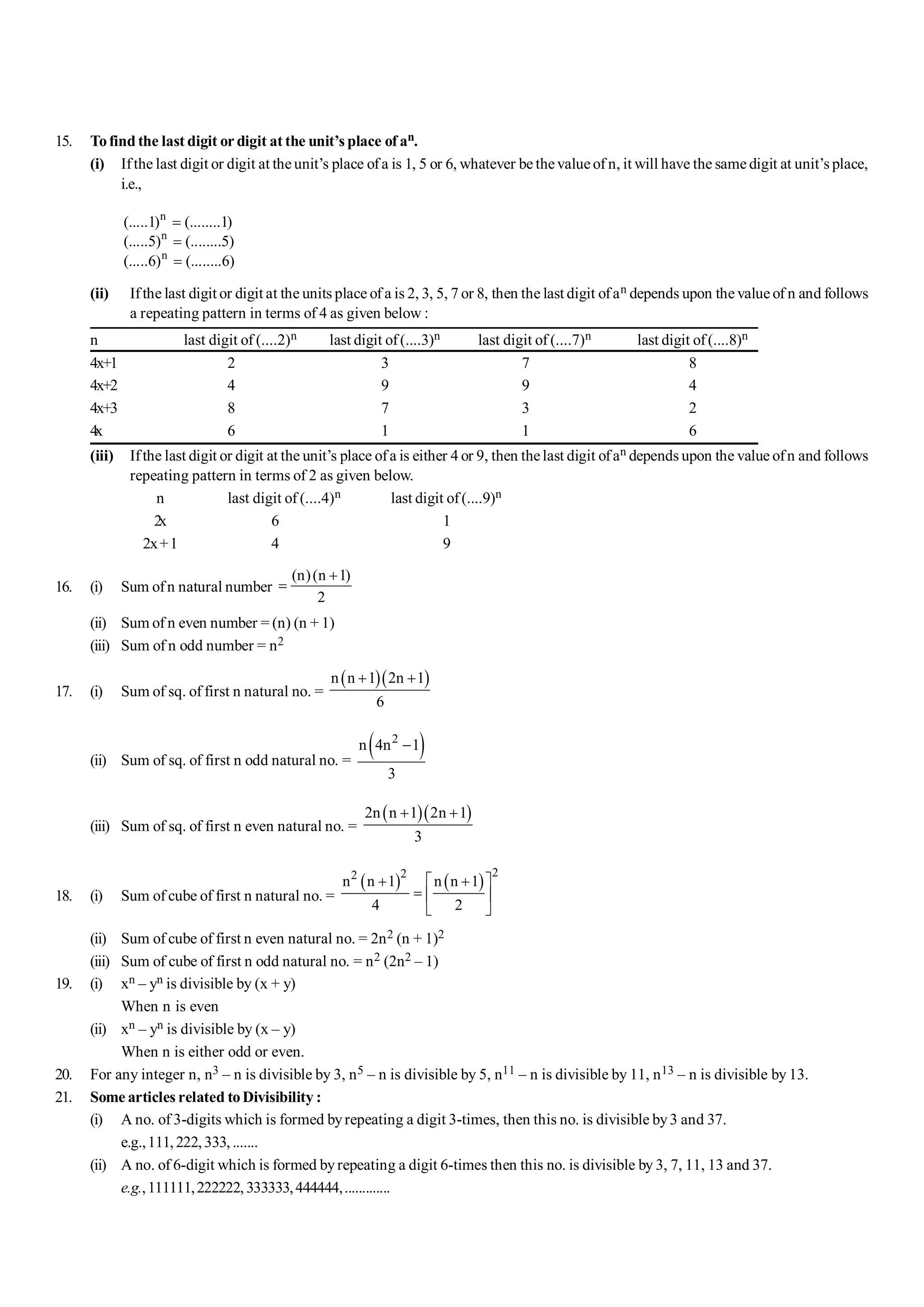

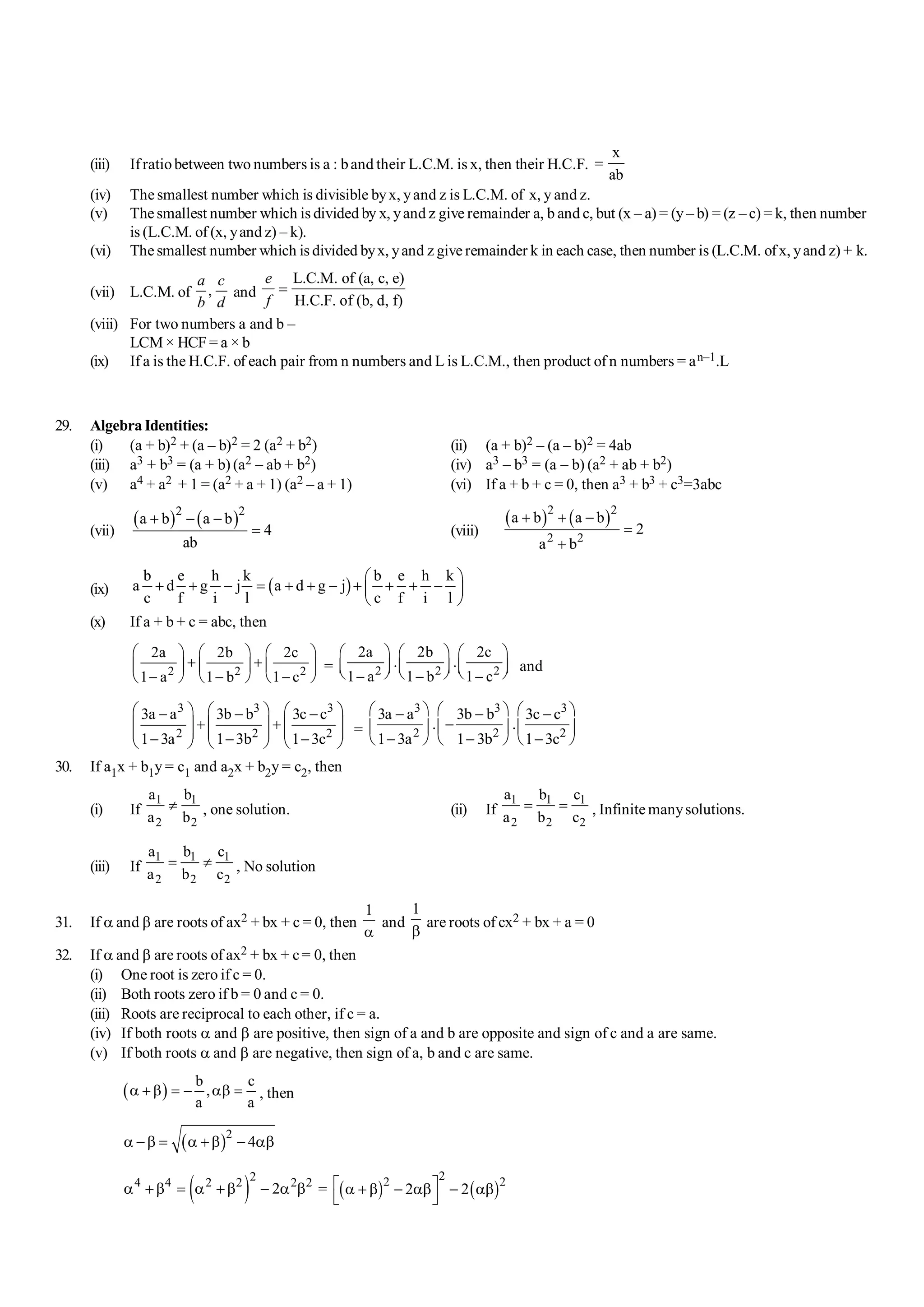
![33. Arithmetic Progression:
(i) Ifa, a + d, a + 2d, ..... are in A.P., then, nth term of A.P. an = a + (n – 1)d
Sum of n terms of this A.P. = ( )
n
n
S 2a n 1 d
2
= + -
é ù
ë û = [ ]
n
a l
2
+ wherel = last term
a = first term
d = common difference
(ii) A.M. =
a b
2
+
[QA.M. = Arithmetic mean]
34. Geometric Progression:
(i) G.P. ®a,ar,ar2,.........
Then, nth term of G.P. an = arn–1
Sn =
( )
( )
n
a r 1
,r 1
r 1
-
>
-
n
a(1 r )
, r 1
(1 r)
-
= <
-
S 1 r
¥ = - [wherer = common ratio, a= first term]
(ii) G.M. ab
=
35. Ifa, b, c are in H.P.,
1 1 1
, ,
a b c
are in A.P.
nth term of H.M. = th
1
n term of A.P.
2ab
H.M.
a b
=
+
Note : Relation between A.M., G.M. and H.M.
(i) A.M. × H.M. = G.M.2
(ii) A.M.> G.M. >H.M.
A.M. ® Arithmetic Mean
G.M. ®GeometricMean
H.M. ® Harmonic Mean
36. (i) Average of first n natural no. =
n 1
2
+
(ii) Average of first n even no. = (n + 1)
(iii) Average of first n odd no. = n
37. (i) Average of sum of square of first n natural no. =
( )( )
n 1 2n 1
6
+ +
(ii) Average of sum of square of first n even no. =
( )( )
2 n 1 2n 1
3
+ +
(iii) Average of sum of square of first odd no. =
2
4n 1
3
æ ö
-
ç ÷
ç ÷
è ø](https://image.slidesharecdn.com/101-math-short-240421044057-10d1a62f/75/101-maths-short-cut-tips-and-tricks-for-apptitude-7-2048.jpg)
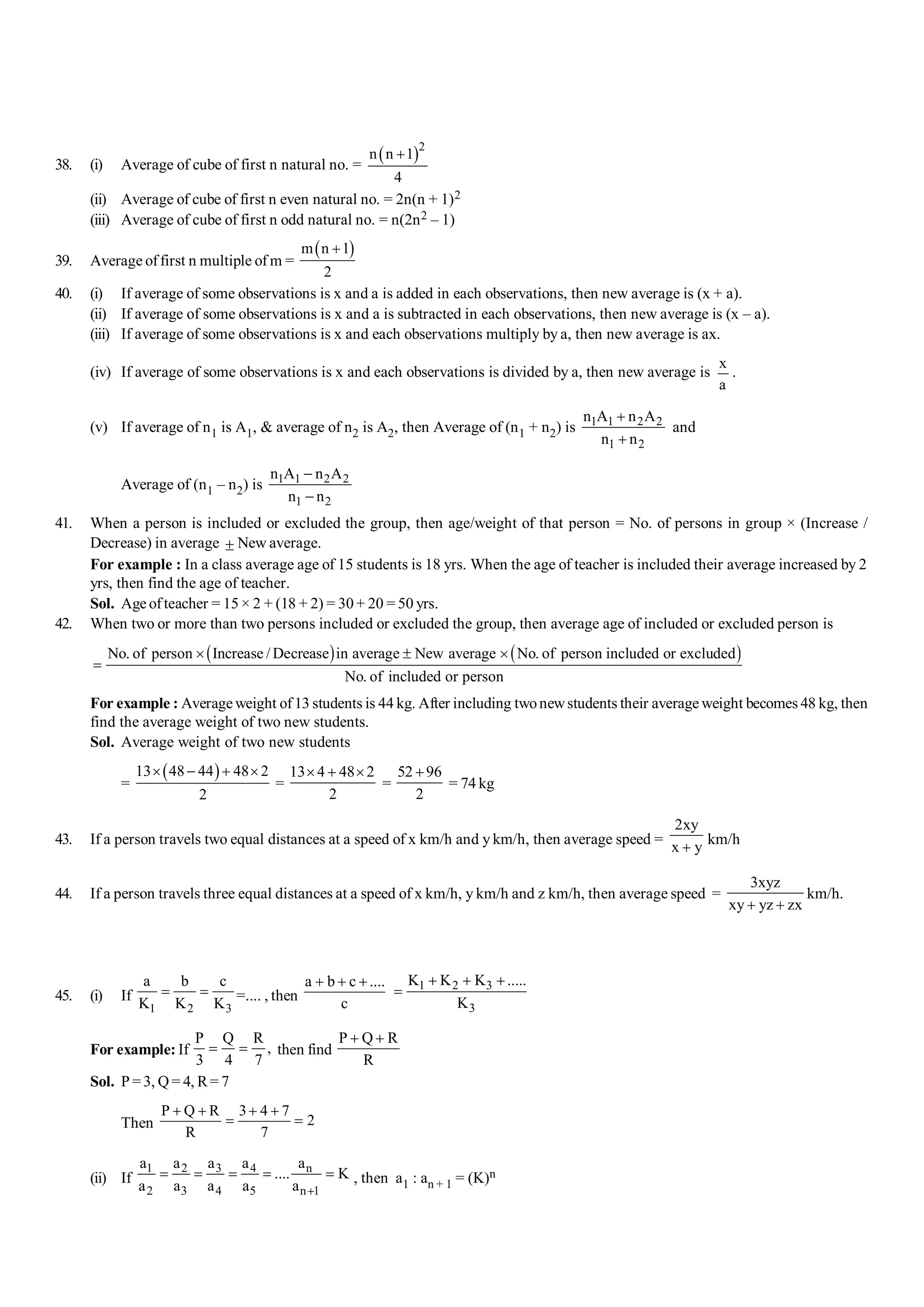

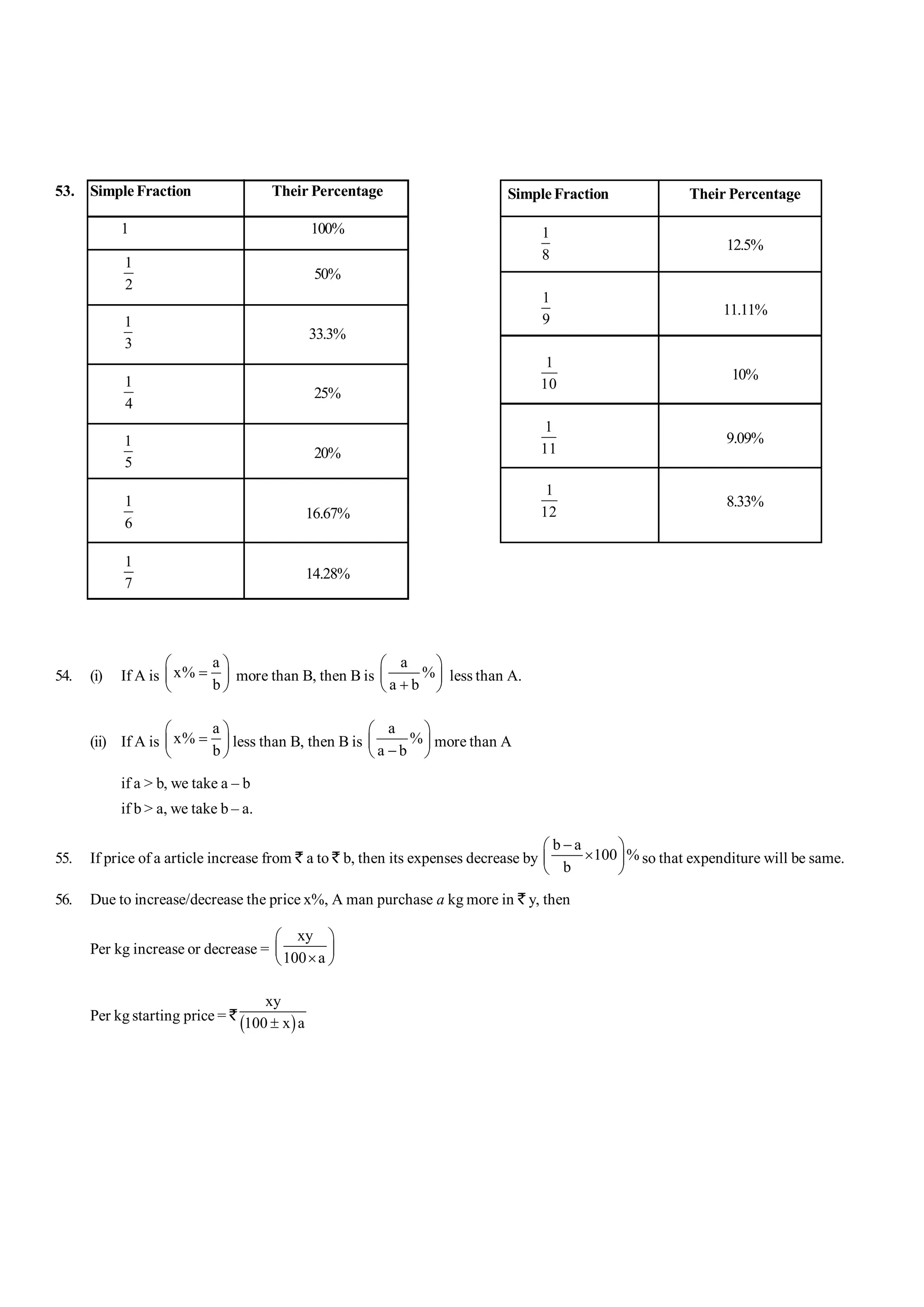
![S-10 101 Shortcuts in Quantitative Aptitude
57. For twoarticles, if price:
Ist IInd Overall
Increase (x%) Increase (y%) Increase
xy
x y %
100
æ ö
+ +
ç ÷
è ø
Increase (x%) Decrease (y%)
xy
x y %
100
æ ö
- -
ç ÷
è ø
If +ve (Increase)
If –ve (Decrease)
Decrease (x%) Decrease (y%) Decrease
xy
x y %
100
æ ö
+ -
ç ÷
è ø
Increase (x%) Decrease (x%) Decrease
2
x
%
100
æ ö
ç ÷
ç ÷
è ø
58. If the side of a square or radius of a circle is x% increase/decrease, then its area increase/decrease =
2
x
2x %
100
æ ö
±
ç ÷
ç ÷
è ø
59. If the side of a square, x% increase/decrease then x% its perimeter and diagonal increase/decrease.
60. (i) If population P increase/decrease at r% rate, then after t years population =
t
100 R
P
100
±
æ ö
ç ÷
è ø
(ii) If population P increase/decrease r1% first year, r2% increase/decrease second year and r3% increase/decrease third year,
then after 3 years population = 3
1 2 r
r r
P 1 1 1
100 100 100
æ ö
æ öæ ö
± ± ±
ç ÷ç ÷ç ÷
è øè øè ø
If increase we use (+), if decrease we use (–)
61. Ifa man spend x% of this income on food, y% of remaining on rent and z% of remaining on cloths. Ifhe has ` P remaining, then
total income ofman is =
( )( )( )
P 100 100 100
100 x 100 y 100 z
´ ´ ´
- - -
[Note: We can use this table for area increase/decrease in mensuration for rectangle, triangle and parallelogram].
62. If CP of x things = SP of y things, then
Profit/Loss =
x y
100 %
y
é ù
-
´
ê ú
ë û
If+ve, Profit;
If –ve, Loss
63. If after selling x things P/L is equal to SP of y things,
then P/L =
( )
y
100
x y
´
±
Profit
Loss
= -
é ù
ê ú
= +
ë û](https://image.slidesharecdn.com/101-math-short-240421044057-10d1a62f/75/101-maths-short-cut-tips-and-tricks-for-apptitude-11-2048.jpg)
